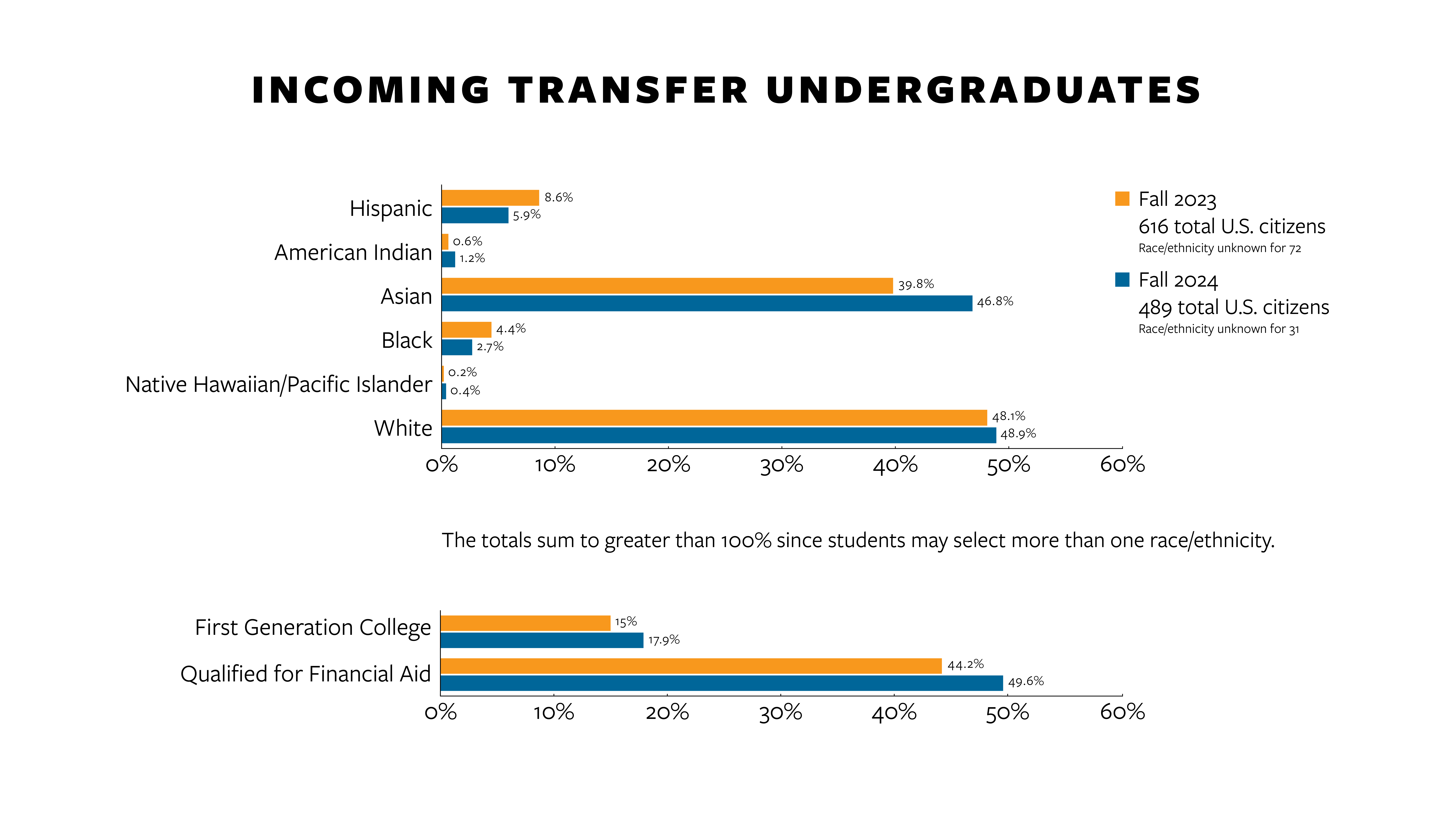Q&A: Cornell releases demographic data for ‘exceptional’ incoming class
By Melanie Lefkowitz, Cornell Chronicle
Cornell has released additional data related to the incoming class of 2028, the first cohort of undergraduate students admitted since the U.S. Supreme Court ruling that prohibited race-conscious admissions practices.
Lisa Nishii, vice provost for undergraduate education and vice provost for enrollment, said that Cornell complied with the requirements of the court’s decision and remains fully committed to robustly supporting a diverse student body through individualized, holistic reviews of applicants that yield a compositionally diverse incoming class that reflects broad differences in worldviews, experiences and interests.
The Chronicle spoke with Nishii about the data.
Question: What was the impact of the Supreme Court decision to ban race-conscious admissions practices on the 2024 incoming class?
Answer: Since Cornell’s founding, at a time when our peer institutions were closed to women and people of color and out of reach for all but the elite, we have been proudly committed to educating students from every background. The Supreme Court’s decision in no way undermines that fundamental commitment. The decision did prohibit the consideration of race in admission decisions, and we now have data for the first cycle of admissions under the new restriction. Aggregated across our eight undergraduate admitting schools and colleges, the data show some shifts from recent norms in the racial and ethnic composition of our incoming fall 2024 class, which are not unexpected. More specifically, we’ve seen an overall decline in the racial diversity of our entering class, similar to many of our peers.
The nature of these shifts depends on how students who identify as multiracial are categorized. Students can either be categorized as multiracial or be counted in every racial category with which they self-identify, which increases the percentages of students in each category so they total more than 100%. Outcomes using both approaches are shared on our university website. The table included here reflects the latter approach. It shows the percentage of U.S. citizens who identify with each racial category; it excludes multiracial categories, international students and those who did not disclose their race/ethnicity (which increased from 5.1% to 8.8%). It shows that when comparing this year’s incoming class of first-year students to last year’s, students who identify as Black dropped from 11.7% to 7.7%. We also saw a decrease in the percentage of Hispanic (16.7% last year to 10.5% this year), American Indian (1.8% to 1.0%), Native Hawaiian/Pacific Islander (0.9% to 0.4%), and white (48.5% to 47.4%) students, while the percentage of students who identified as Asian (36.3% to 38.5%) increased.
Q: How did Cornell change its admissions practices in response to the Supreme Court’s decision?
A: Our processes complied with the court’s mandate. This year, self-reported race and ethnicity data was not considered in the admissions review cycle.
In selecting each entering class, we look holistically at each applicant’s academic performance and interests, talents and accomplishments, lived experience, and alignment with our public impact mission. We actively seek students who demonstrate the qualities of open-mindedness, curiosity and a willingness to engage across differences. We are excited about having admitted an exceptional incoming class with far-ranging intellectual and personal interests, who will push the boundaries of conventional disciplines and contribute unique insights to our academic discourse. We strive to build a community of scholars who will graduate with not only a world-class education but a deep appreciation for the complexity and interconnectedness of our global society.
Q: Why is diversity in the student body so important?
A: We remain fully committed to our “…any person… any study” founding principle. When universities admit broadly diverse classes through a holistic review of applications, students from diverse backgrounds and with wide-ranging interests, talents and worldviews can challenge one another to accelerate their learning. We fundamentally believe that co-learning across differences is essential for preparing students to lead in the complex, diverse world beyond Cornell. For generations, Cornell’s remarkable students have done just that.
Q: What steps are you taking to preserve and enhance Cornell’s historical diversity?
A: We are looking at our data in different ways to try to understand where in the admissions process we saw the biggest changes, keeping in mind that we only have one year of data at this point. We have the benefit of being able to accelerate our learning by collaborating closely across our eight admitting undergraduate colleges to analyze our data and brainstorm approaches – within the boundaries of the law – to pilot in the years ahead.
We believe we can do more to work with prospective students earlier in high school to provide guidance about the courses needed to be competitive for different paths of study at Cornell, access to preparatory coursework and admissions workshops, and application support for preparing stronger, more tailored applications that demonstrate fit with the mission and culture of the college or school to which they apply. We will pay special attention to doing this in partnership with high school counselors and community-based organizations that help students become college-ready. Our new partnership with QuestBridge’s College National Match program is just one example. This program helps high-achieving students from low-income and underserved households prepare for admission to top colleges and universities.
And over the next five years, we will invest in developing agreements with more community colleges across the country, with a focus on colleges with curricula that can serve as a natural pathway to Cornell and have diverse student bodies.
We expect this to be a multi-year, multi-pronged effort.
Media Contact
Get Cornell news delivered right to your inbox.
Subscribe


